Mafia 2's Empire Bay is still one of PC gaming's greatest cities
by Andy KellyWatch a video version of this article above.
Mafia 2 is criminally underrated. It's a lavish gangster spectacle with some of the best world-building on PC. The setting is stunning, the story is gripping, and the attention to detail is obscene. Sure, it has a few problems. There's a little too much combat. The car handling is twitchy. Some of the checkpointing is rage-inducing. But it's still great, despite its shortcomings.
It's the story of Vito Scaletta, whose family emigrates from Sicily to the city of Empire Bay in 1932. After being arrested for robbery in 1943, he's given a choice: go to jail, or join the Army. He decides a stint in the Army is better than rotting in a cell, and finds himself back in Sicily fighting Mussolini's blackshirts.
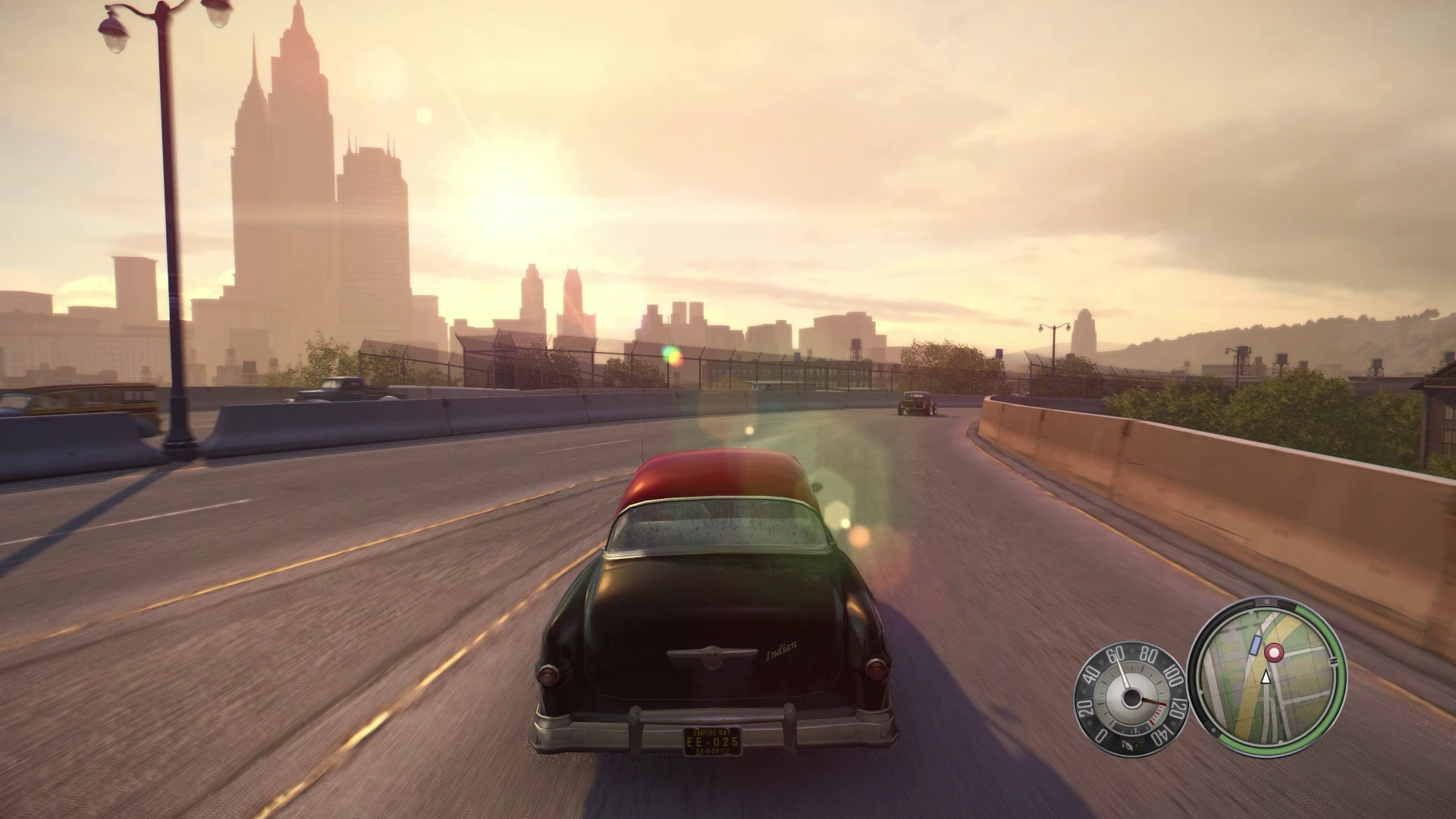
In 1945, Vito returns to Empire Bay on leave. He's due back in a month, but his old pal Joe Barbaro—who has connections with organised crime—pulls some strings, and he's suddenly freed from service.
He tries to live a straight life, humping crates down at the docks for ten bucks a day. But he doesn't last long. The lure of the underworld, and the riches it promises, is just too powerful for a guy like Vito.
Reviews were mixed. Its toughest critics complained that its open world was empty, that there was nothing to 'do' in it. But they were kinda missing the point. If you play Mafia 2 expecting Grand Theft Auto, you're going to be disappointed. It's really a completely linear, story-led shooter.
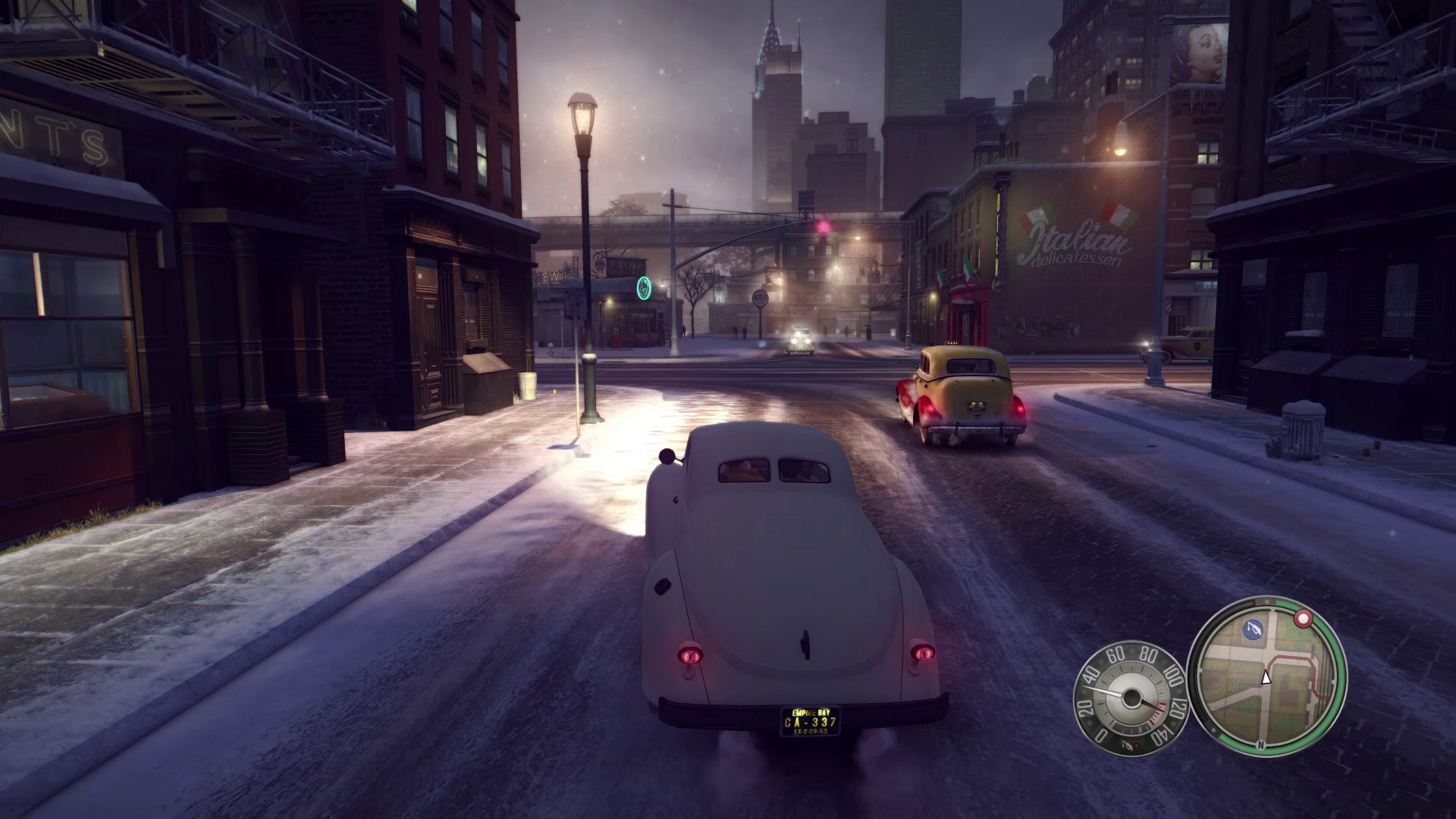
The city is there, but it's just a backdrop. A lovingly crafted film set designed to give the story a rich sense of place. Empire Bay is not as dense or intricate as the likes of Grand Theft Auto V's Los Santos or, more recently, Watch Dogs 2's San Francisco—but it's still one of the best virtual cities on PC.
It's fictional, based loosely on New York City and Chicago. But the artists at 2K Czech did a stellar job of making it feel like a real place. And the level of fine detail is remarkable throughout. Workers mill around the docks, unloading cargo from ships. Cherry blossom trees sway in the wind in Chinatown. Birds perch on street signs. There are newspaper boys, smoking chimneys, and a thousand other tiny incidental details, which combine into a wonderful whole.
Empire Bay is not littered with side missions, arbitrary collectibles, or crazy vehicles to steal. You never get to drive a tank or use a jetpack. But it's still a joy to wander and explore its streets—for what it is, and how it feels, rather than what it has to offer you between missions.
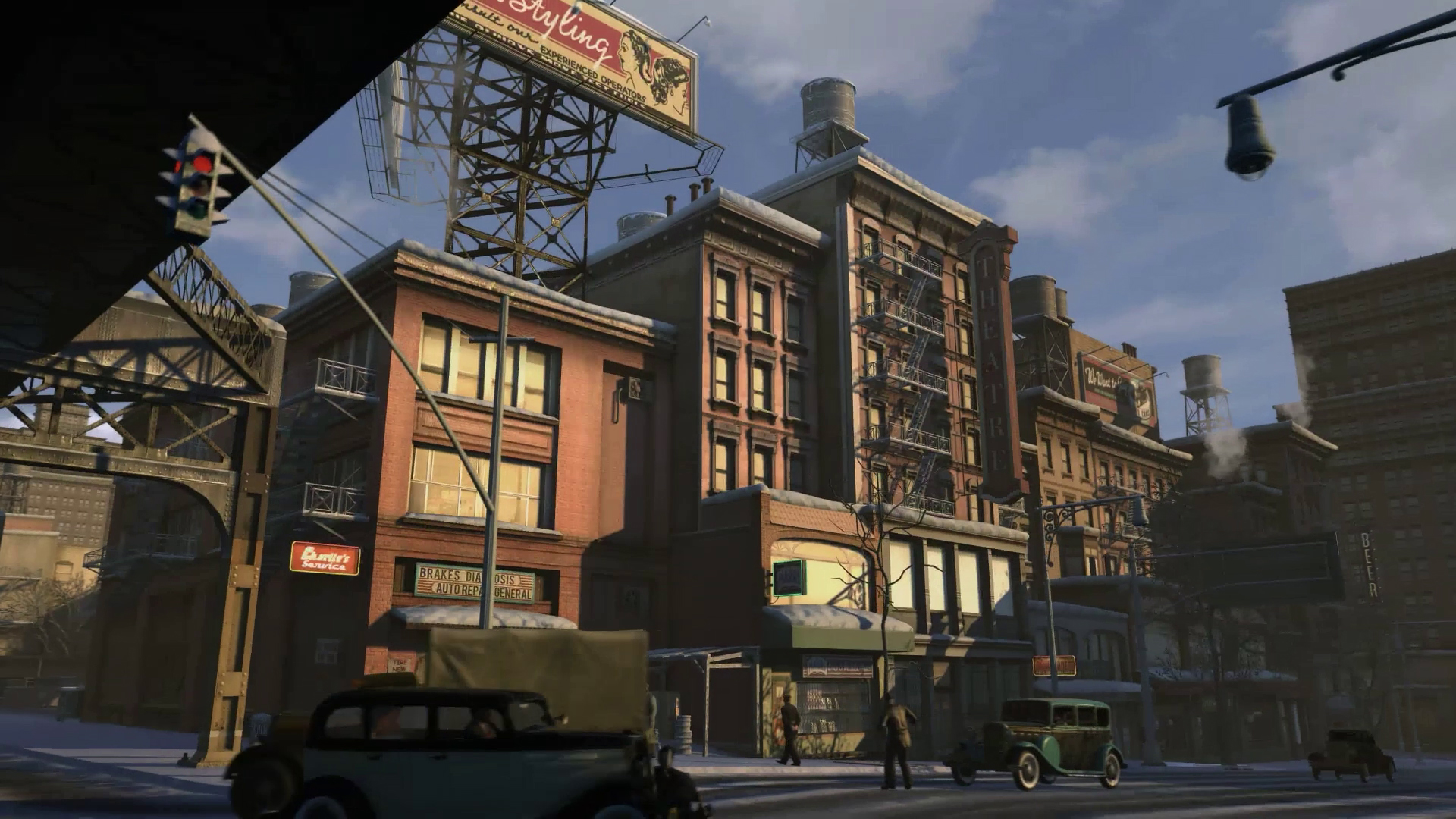
It didn't take me long to fall in love with Mafia 2. The second mission, in fact. Our anti-hero returns from World War II on a cold winter's evening in 1945, and finds himself back in the Italian neighbourhood where he grew up. Dean Martin's Christmas classic Let It Snow plays as he walks the streets, still in his uniform, suitcase in hand. An inspired use of licensed music.
A fleet of B-17 bombers roar overhead, reminding us that the war is far from over. We see couples arguing, kids throwing snowballs, and a guy getting a haircut in a warmly-lit barbershop. It's a wonderful piece of scene-setting—something this game is obscenely good at all the way through.
Mafia 2 is also a rare example of an open-world game where we see two versions of the same city. The first chunk of the game takes place in the 1940s. The mood is dark and gloomy, with snow piling up on cars and sidewalks, people slipping on icy pavements, and a palpable chill in the air.
Mafia 2 is a superb period piece, second only to Rockstar's painstakingly researched L.A. Noire in its authentic portrayal of America in the 1940s. It's here that Vito begins climbing the criminal ladder with Joe. Like GTA, you start off at the lowest level, pulling off small-time heists, selling stolen goods, and other odd-jobs. But then something goes wrong, and Vito ends up in jail.
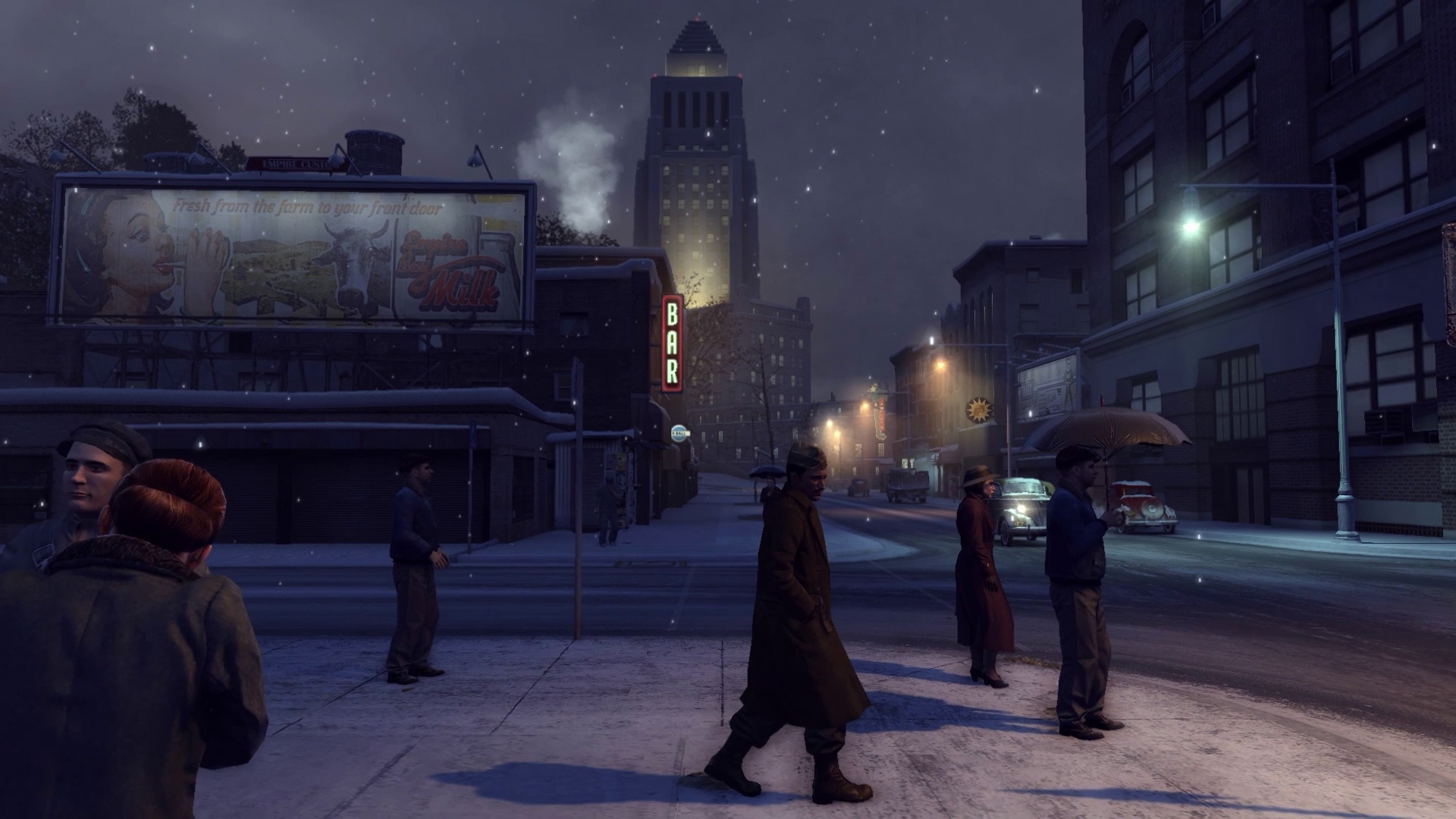
This serves as an interlude of sorts. You're confined to a prison, the Hartmann Federal Penitentiary, which is another example of 2K Czech's absurdly detailed world-building. The first-person walk into the prison, past rows of jeering inmates, is particularly well done. In the slammer you get to know a few of your fellow inmates, including a respected mafia consigliere named Leo Galante, who's there doing his own time in the joint.
Vito sharpens his boxing skills, cleans a few toilets, beats some people up in the shower room, and impresses Galante, who proves to be a valuable ally later in the game, and also appears in Mafia 3. The whole prison sequence is like The Shawshank Redemption meets the prison scenes from Goodfellas, and it's a perfect palate cleanser for what's to come.
Six years later, Vito emerges from prison to find a very different Empire Bay. The year is 1951, and the city is no longer bleak and snowy: it's bright, colourful, green, and vibrant. The war is over, the economy is recovering, and the teenagers have taken over, screeching around in sports cars, listening to rock-and-roll, and, later in the game, butting heads with the stubbornly old school Joe and Vito. They really don't like these flashy hot rod-drivin' greasers.
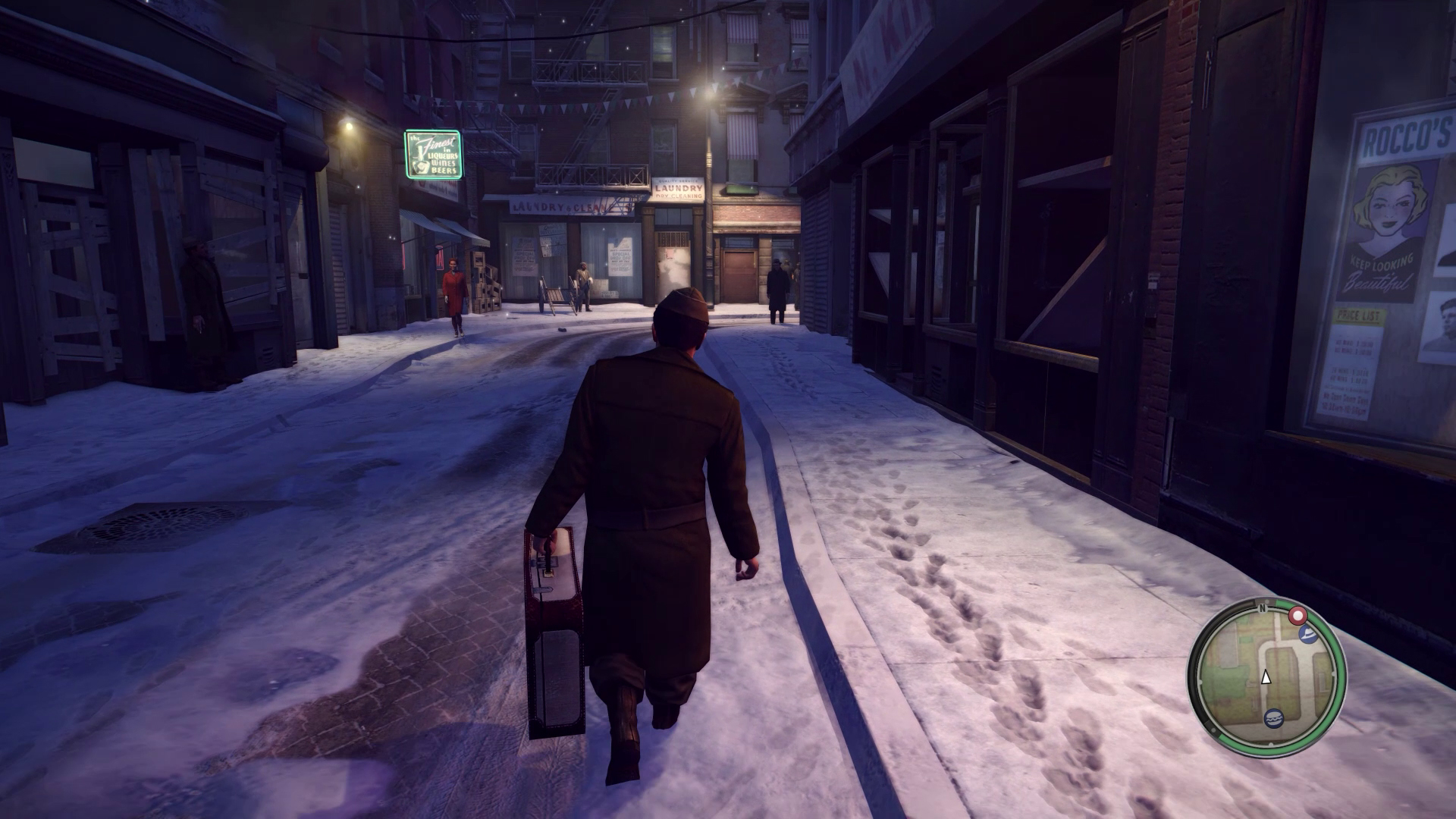
Mafia 2 may be set in a fictional city, but it's a convincing, stylised portrait of the United States pre and post-war—and not just the good bits . It's surprisingly bold when it comes to dealing with racism, poverty, and other issues that plagued the period—something Mafia 3 tackles even more directly.
But Mafia 2 is also a gangster power fantasy. As his bank balance increases, you can dress Vito up in fashionable period-accurate suits, scream around in shiny sports cars, and fire Tommy guns. As he rises in the ranks, his safehouses get more lavish, from scummy apartments to an idyllic modernist 1950s house in the leafy suburbs. Mafia 2 may be rooted in real history, but it's an exaggerated, pulpy tale of warring gangs and criminal conspiracy.
It's a good one, though, with a twisty, dramatic plot that will keep you interested all the way through its 12-or-so hours. Vito is not a sympathetic character. He is, after all, a ruthless criminal. But you warm to him just the same. There's something just inherently likeable about him. And his buddy Joe, while a little annoying at times, being the game's comic relief, is a memorable sidekick. It's a solidly written and well-acted game, filled with memorable set-pieces.
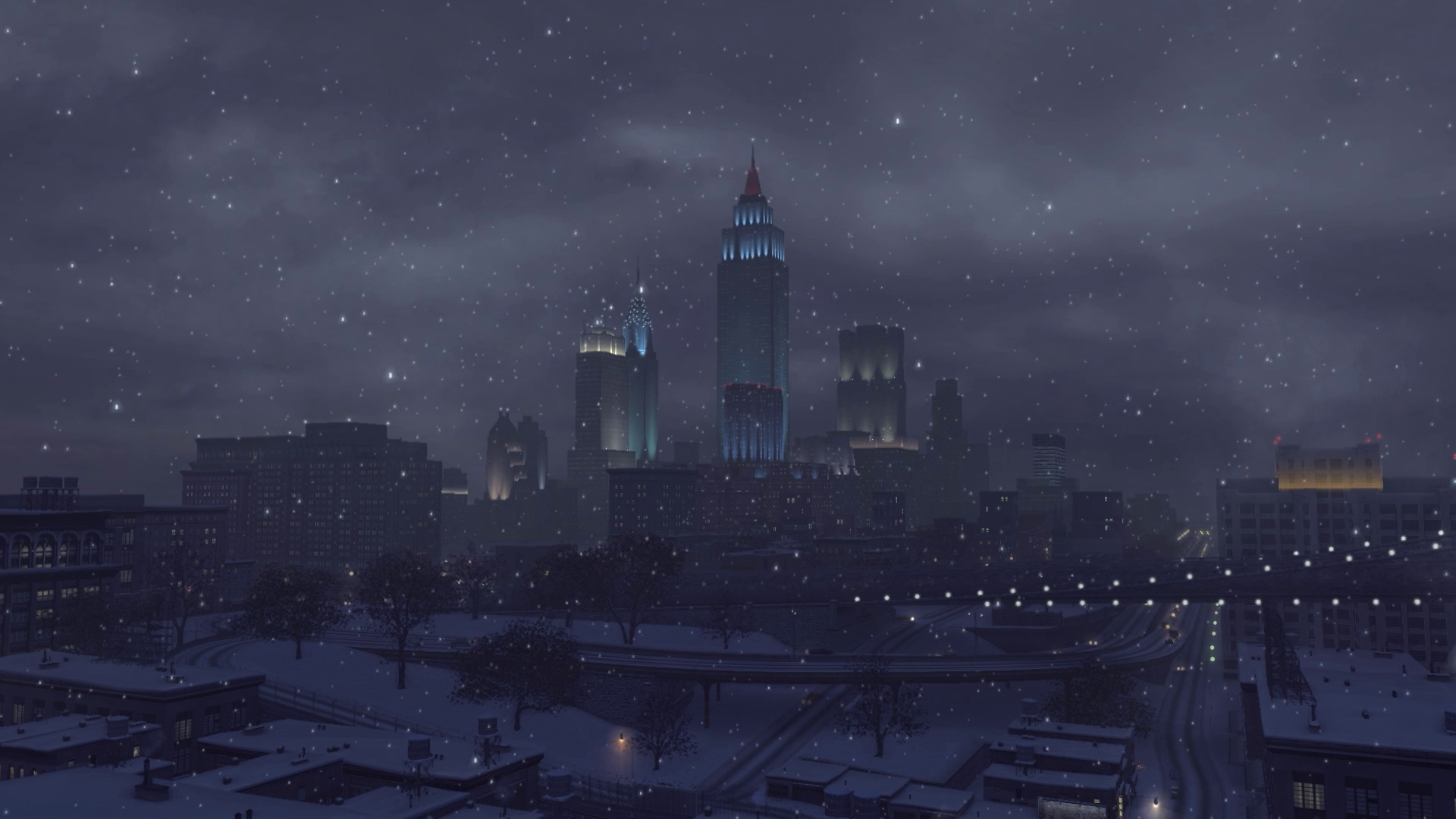
Looking back, it's the smaller, quieter moments in Mafia 2 that have really stuck with me over the years. In one mission, Vito drives Joe and another character to bury a body in the countryside. They're both drunk, and as you drive, they start singing along to Dean Martin's sentimental ballad Return to Me. When it gets to the Italian verse they clearly don't know the words, but give it a shot anyway.
It's a funny game when it wants to be, and these moments of comedy are a nice break from the action. The game regularly takes the time to slow down and let you enjoy the world and atmosphere. Honestly, when you get down to it, Mafia 2 is a pretty generic cover shooter. But it makes up for it with its mission variety, personality, sense of humour, and, of course, Empire Bay, which remains one of the most magnificent settings on PC. And thanks to the release of Mafia 2: Definitive Edition, it'll run on a modern PC without any hassle.